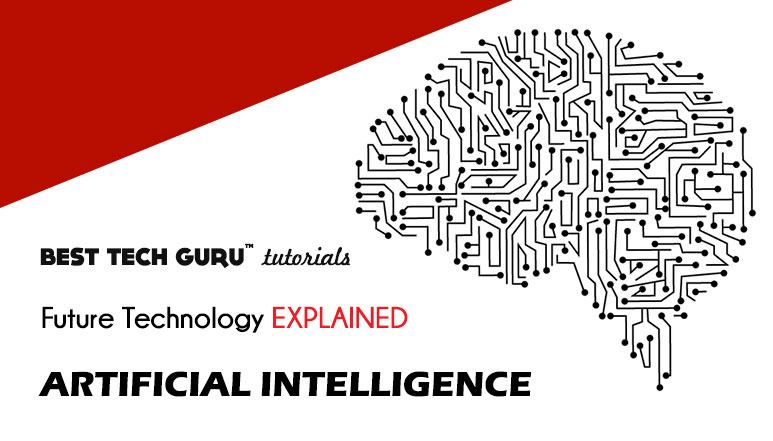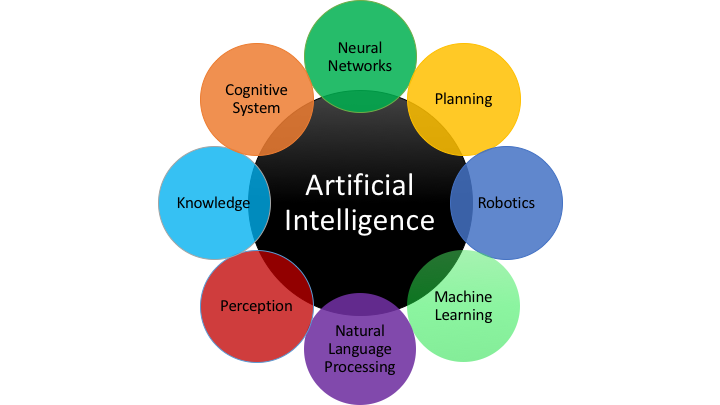
Since the invention of computers or machines, their capability to perform various tasks went on growing exponentially. Humans have developed powerful computer systems and while exploiting the power of the computer systems, the curiosity of human, lead him to wonder, “Can a machine think and behave like humans do?”
Thus, the development of a branch of Computer Science, named “Artificial Intelligence” started with the intention of creating similar intelligence in machines that we find and regard high in humans. According to the father of Artificial Intelligence, John McCarthy, it is “The science and engineering of making intelligent machines, especially intelligent computer programs”.
But, what are the goals of AI? How it is used? What are the applications of AI? How it will help us in future? This tutorial will answer all your questions related to Artificial Intelligence so, let’s learn every aspect of AI in details:
What is AI?

Artificial Intelligence is a branch of computer science that makes machines and computer programs intelligent. The term AI was coined by Stanford researcher John McCarthy in 1956 during The Dartmouth Conference. Artificial Intelligence is a way of making a computer, a computer-controlled robot, or a software think intelligently, in the similar manner the intelligent humans think.
Artificial Intelligence or AI is accomplished by studying how human brain thinks, and how humans learn, decide, and work while trying to solve a problem, and then using the outcomes of this study as a basis of developing intelligent software and systems.
Any program can be considered as AI if it does something that we would normally think of as intelligent in humans. How the program does it is not the issue, just that it should be able to do it at all. That is, it is AI if it is smart, but it doesn’t have to be smart like us.
Goals of AI:
The primary goal of Artificial Intelligence is to Create Expert Systems − the systems which exhibit intelligent behaviour, learn, demonstrate, explain, and advice its users. Second is to Implement Human Intelligence in machines that is creating systems that understand, think, learn, and behave like humans.
In other words, the ultimate goal of AI is to enable machines to do everything that human intelligence is capable of, which includes the property of being self-aware. Everything from being able to drive cars, play games like chess and tic-tac-toe, flying planes, writing poetry, novel, or fiction to autonomous planning and scheduling for aircraft, logistics planning to medical diagnosis and coding.
Applications of AI:

Artificial Intelligence serves in different fields such as –
- Gaming – AI plays a crucial role in strategic games such as chess, poker, tic-tac-toe, etc., where machine can think of large number of possible positions based on heuristic knowledge.
- Natural Language Processing – It is possible to interact with the computer that understands natural language spoken by humans.
- Expert Systems – There are some applications which integrate machine, software, and special information to impart reasoning and advising. They provide explanation and advice to the users.
- Virtual assistants – The virtual assistants or intelligent personal assistants which uses a natural language user interface to answer questions, make recommendations, and perform actions by delegating requests to a set of Web services. The assistants learn from the users habits and provide more informed results. The virtual assistants are bound to be embedded into every electronic products in the future.
- Handwriting Recognition – The handwriting recognition software reads the text written on paper by a pen or on-screen by a stylus. It can recognize the shapes of the letters and convert it into editable text.
- Vision Systems – These systems understand, interpret, and comprehend visual input on the computer. For example,
- Doctors use clinical expert system to diagnose the patient.
- Police use computer software that can recognize the face of criminal with the stored portrait made by forensic artist.
- Speech Recognition – Some intelligent systems are capable of hearing and comprehending the language in terms of sentences and their meanings while a human talks to it. It can handle different accents, slang words, noise in the background, change in human’s noise due to cold, etc.
- Intelligent Robots – Robots are able to perform the tasks given by a human. They have sensors to detect physical data from the real world such as light, heat, temperature, movement, sound, bump, and pressure. They have efficient processors, multiple sensors and huge memory, to exhibit intelligence. In addition, they are capable of learning from their mistakes and they can adapt to the new environment.
Future of AI:
From Siri to self-driving cars, Artificial Intelligence (AI) is already present in our lives but its impact is very small now, in future, when the technology will evolve more, it will have terrific impact on our lives and AI is progressing rapidly towards that day.
AI is often portrayed as robots with human-like characteristics, but AI can encompass anything from Google’s search algorithms to IBM’s Watson to autonomous weapons.
Artificial Intelligence today is classified in two types – Narrow AI (Weak AI) and General AI (Strong AI). The Narrow AI is designed to perform a narrow task e.g. only facial recognition or only internet searches or only driving a car.
However, the long-term goal of many researchers is to create General AI or Strong AI. While narrow AI may outperform humans at specific tasks, like playing chess or solving equations, Strong AI would outperform humans at nearly every cognitive task.
All of the above sounds too Techie? Read this:
Artificial Intelligence, to sum up in simple language, are basically advanced computer programs which can think, learn and decide like humans while considering all the scenarios of a given situation, these programs are then used in all the places like your smartphones, robots and all.
We hope this tutorial helped you to understand a Future Technology in details and if you loved it, do share it with your friends and let them learn too. Want to add some valuable information, statistics or a fact related to AI, please drop a comment below, we will love it!







